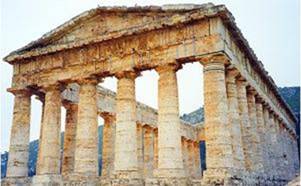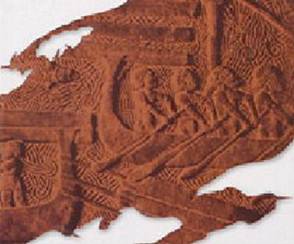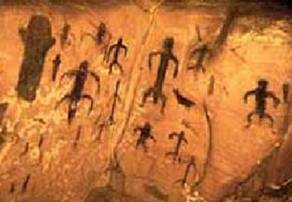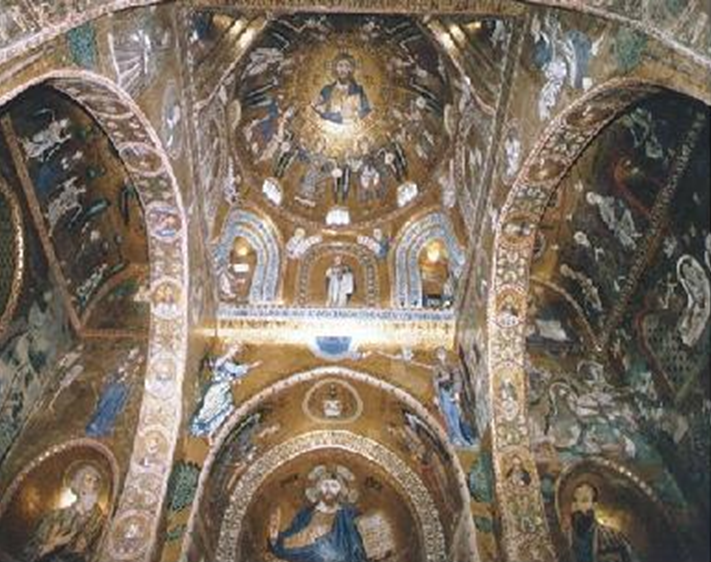A Historical Touch
According
to legend, Erice, son of Venus and
Neptune, founded a small town on top of a mountain (750 meters above sea level) more than three hundred thousand years ago. The great Thucydides (~500 B.C.) -- the
founder of modern history (that is, of the recording of events in a methodic and chronological sequence as they
really happened without reference to mythical causes) -- writing about events connected with the
conquest of Troy (1183 B.C.), says: "After the fall of Troy some
Trojans on their escape from the Achaei arrived in Sicily on boats and as they settled near the border with the Sicanians all together they were named Elymi: their towns were Segesta and Erice."
 Segesta
Segesta
This inspired
Virgil to describe the arrival of the Trojan royal family in Erice, and the burial of Anchise by his son Enea on the coast below Erice. Homer (~1000 B.C.), Theocritus
(~300 B.C.), Polybius (200 B.C.), Virgil
(~50 B.C.), Horace (~20 B.C.), and others have celebrated this
magnificent spot in Sicily
in their poems. For seven centuries (XIII-XIX) the town of Erice
was under the leadership of a local oligarchy, whose wisdom assured a
long period of cultural development and economic prosperity which in
turn gave rise to the many churches, monasteries and private palaces
which you see today.
 Punic
warships
Punic
warships
In Erice you can admire the Castle of Venus,
the Cyclopean Walls (~800 B.C.) and the Gothic Cathedral (~1300 A.D.). Erice at present is a mixture of ancient and
medieval architecture. Other masterpieces of ancient civilization are
to be found in the neighborhood: at Motya (Phoenician), Segesta (Elymian), and Selinunte (Greek). On the Aegadian Islands, the theatre of the decisive
naval battle of the first Punic War (264-241 B.C.), suggestive neolithic and Paleolithic vestiges are still visible: the grottoes of Favignana,
the carvings and murals of Levanzo.
 Paleolithic
murals
Paleolithic
murals
Splendid
beaches are to be found at San Vito Lo Capo, Scopello,
and Cormino, and a wild and rocky coast
around Monte Cofano: all at less than one
hour’s drive from Erice. A
slightly longer drive takes you to Palermo,
where you can admire the splendid architecture of the Norman
and Swabian emperors.
 Palermo
Palermo
 Segesta
Segesta Segesta
Segesta
 Paleolithic
murals
Paleolithic
murals
 Palermo
Palermo